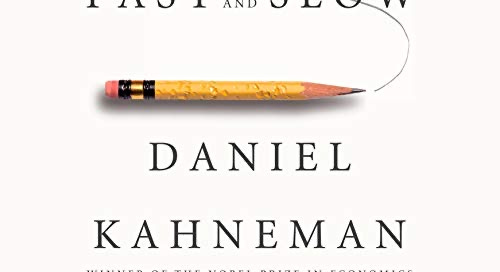We have two systems of thinking.
System 1 operates automatically and quickly, with little or no effort and no sense of voluntary control.
System 2 allocates attention to the effortful mental activities that demand it, including complex computations. The operations of System 2 are often associated with the subjective experience of agency, choice and concentration.
Daniel Kahneman, Thinking Fast and Slow
I read Thinking Fast and Slow a couple of years ago based on a recommendation from a friend. A year into VC, I’m trying to get better at making decisions by re-examining existing mental models and approaching evaluating companies with more nuance.
Today, competition is the 2nd most common reason we pass on companies.
We see a lot of ideas focused on helping people find work, help, friends, lovers, doctors, and stuff to buy. In the last year, we’ve seen a lot of ideas helping businesses automate sales, marketing, customer support, and legal.
My knee jerk reaction is to pass on companies in competitive spaces. If we see dozens of these companies, the customers they’re selling to must too, making acquisition expensive, sales cycles longer, and retention questionable. So even if it’s the best approach of the dozens or hundreds out there, it’s tough to see a path to scale without beaucoup VC $$s, which generally isn’t a great fit for us as a fund.
I’ve been wrestling with competitive spaces because while most of (these) companies will not have venture-scale outcomes, product replacement cycles dictate that new leaders are likely to emerge in each category in the next decade.
Frank Rottman, GP of QED spoke about this in fintech during his conversation with Samir Kaji on Venture Unlocked.
What are the charts going to look like 10 yrs from now or 15 years from now? I think it’s almost a narrative violation to say that it’s going to be the exact same players that are out there today.
The thought that there won’t be a digitally native bank in each and every country in the top 10 charts…relying on old infrastructure, relying on old branches, which are really 50x50 boxes on street corners that help build awareness for the banking product and services. It’s an old way of doing things.
The thought that 1 out of the top 10 in every country is a digitally native bank…in an over under bet, I would take the over on that if you gave me the duration of 10 years.
Rob Biederman, GP of Asymmetric Capital, shared how b2b product replacement cycles work on the Full Ratchet podcast, and why horizontal platforms are hard to get excited about:
The reality is that the moat in SaaS, particularly horizontal, is just not that interesting. So if you look at the history of HRIS or ATS or ERP or CRM, any kind of alphabet soup, horizontal, vertical software, there’s a product replacement cycle that happens with almost complete regularity every 4 to 7/8 years. Salesforce is one company that seemingly hacked that curve a little bit.
The reason that happens, and you’re seeing it with products like Zoom right now, where there’s a really annoying incumbent that has this really hard to use product that is way over featured and is too expensive for the marginal user. Then somebody says ok I’m going to build a slimmed down really interesting new version of this with just the bare minimum features, a very Apple style user experience, and everyone switches to that.
One day, GE and Goldman Sachs show up. You face a hard decision as a founder at that point because if someone’s offering you a 250k seat deal and you have 180k paying users, it’s very hard to turn down…(the enterprise deal) contributes a lot of profitability. So you start building out your product to appease your large enterprise customers.
Before you know it, the product doesn’t work that well, somebody brings out a new, easy, slimmed down thing, and they benefit from 4-6 years later technology, and then GE and Goldman Sachs call them…When we go into horizontal, we’re always asking, what’s the moat here. In every case, we were able to tell ourselves a story of why the n+1 user had a better experience.
Often in competitive spaces, there are more reasons to say no then yes. Maybe VCs take a meeting because of team pedigree or, if they’re thesis-driven, because they believe in the specific approach to the problem. What gets me excited is a wedge into the market as phase one of a longer-term vision. We need to do step 1 for X customers so we can do step 2 for X*100 customers. What happens next?
You have to have the path right. You have to have the team right. You have to have the strategy right. But you don’t have to have everything precisely laid out. When you capitalize a company, your capital attracts the talent that turns the narrative into reality. - Frank Rotman, QED



